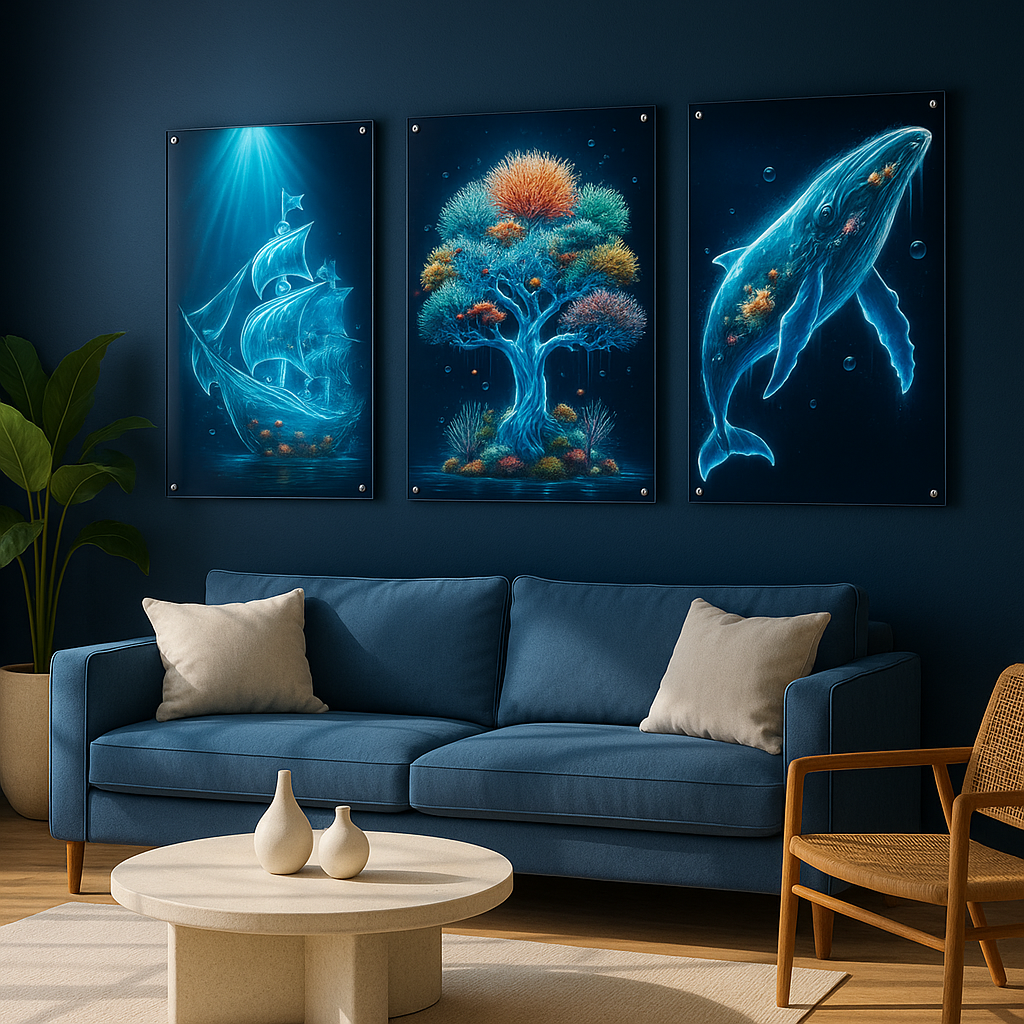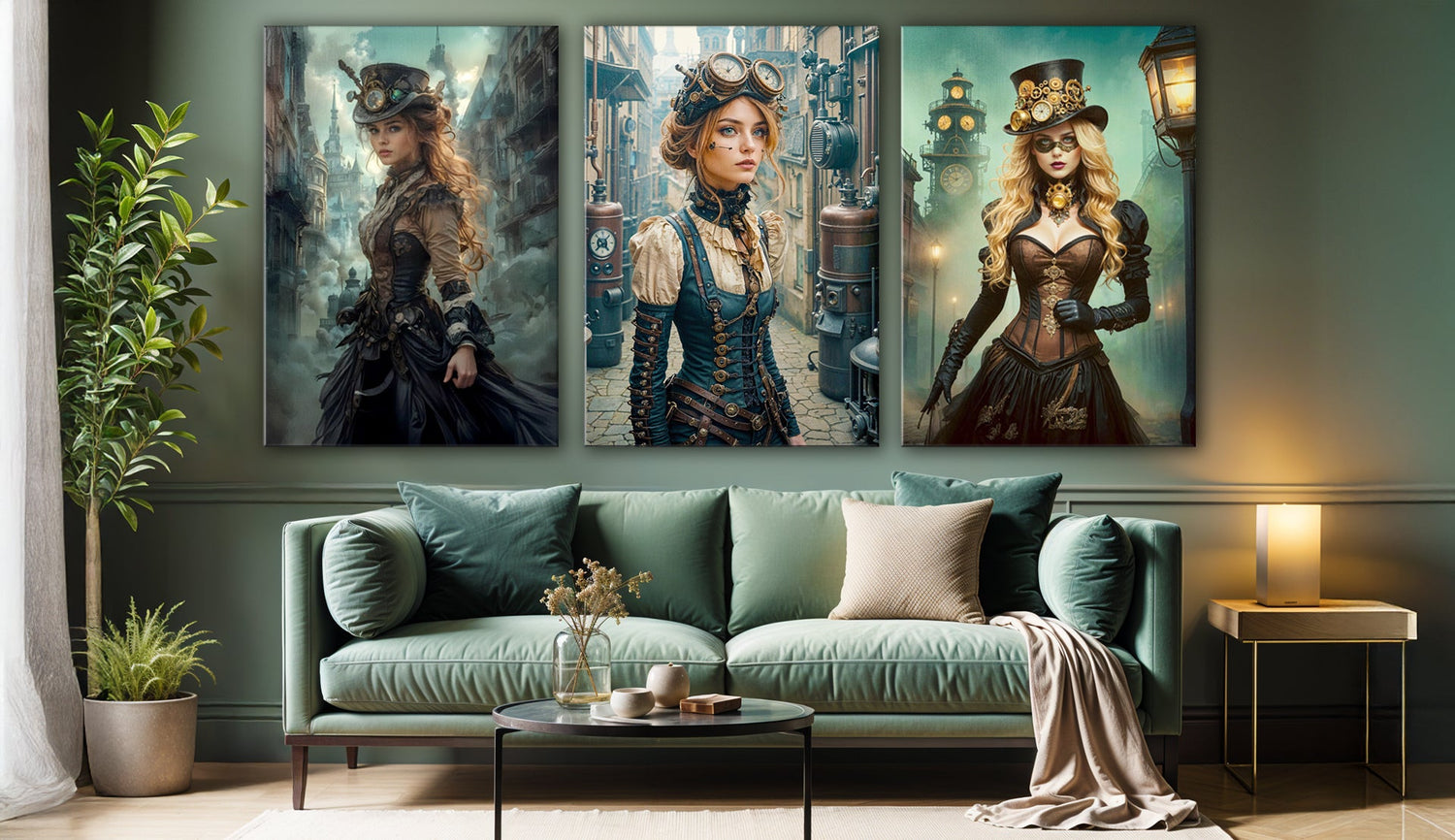
How AI Art Meets Human Curatorship: The Creative Process Behind the Collection
Sometimes, art prompts the question: did a person dream this up, or did something more complex take part in its creation? While some still picture an artist working quietly at an easel, the reality behind today’s water-themed acrylic collection feels more layered. In many cases, this is not just a figment of human imagination. Increasingly, digital intelligence, shaped by algorithms, is involved in this process, and both sides together shape the final outcome.
The Ripple Effect of Technology in Art
Recently, artificial intelligence has become more than just a novelty in artistic circles. Its algorithms pick through thousands of coral reefs, wave patterns, and shifting ocean blues, sometimes landing on combinations that look completely new. There’s a kind of unpredictability to the process—sometimes it works, sometimes it falls flat, but the surprise is often the point.
Yet, it would be a mistake to assume that every digital output deserves a place on the wall. What feels exciting on a screen can end up feeling cold or out of place in a living room. That’s where people still matter: curators step in, making choices that an algorithm can’t quite replicate, and selecting only what suits a real space or mood.
From Pixels to Personality: Curating the Collection
AI may offer a tidal wave of options, but it’s the human eye that sorts through the excess. Many digital drafts, vibrant as they are, just don’t work outside a computer screen. A print that feels full of energy online might clash in a quiet corner at home.
Curation, in this sense, is part instinct, part editing. Someone has to decide which piece brings the right calm to a bedroom, which shade of turquoise actually fits a kitchen wall, or whether a jellyfish scene feels nostalgic or just odd. In the end, only a few images make the leap from pixels to personality.
Building Cohesion: The Art of Storytelling
Hanging art is easy; crafting a collection takes more. It’s tempting to settle for a lineup of pretty pieces, but a true collection feels intentional. The water-inspired prints were chosen not just for how they stand alone, but for how they interact—one echoing the next, a sense of movement carrying across a room.
Some rooms might get a rolling wave, others a shimmering koi or swirling coral. Together, the works start to build a conversation, much like a group of guests who discover common ground over dinner. Sometimes, it’s this interaction that makes the space feel richer and more alive.
Behind the Scenes: Collaboration in Action
There’s an ongoing debate about whether technology drains art of its “soul.” Maybe it does, sometimes. However, when curators take the initiative—adjusting the color here, discarding the image there—the result looks much less mechanical. AI offers new options, and people refine them, always thinking about how glossy acrylic printing will play with sunlight or change the mood of the room.
The result is not just a slogan on the wall. Interaction is important—the willingness to change course or say “no” when something isn't working.
Acrylic Art: More Than a Pretty Surface
The medium was not chosen at random. Acrylic, especially at 4mm thickness, brings a certain dimension that makes water scenes leap out. The panels resist scratches and fading, even in rooms that get a lot of sun. Some may say acrylic lacks the softness of canvas or the texture of traditional media, but in modern spaces or offices, its clean, frameless edge often feels just right.
Placed side by side, these prints do more than just cover the wall. They freshen up the space, often becoming the focal point of a room that might otherwise feel empty.

The Debate: AI vs. Human Artistry
Skepticism remains, and it is easy to understand why. Can a digital prompt, tweaked by a curator, create art that actually moves people? There’s no single answer. Some prints feel electric, with both novelty and familiarity at play. Others might leave viewers cold. Often, the strongest pieces come from a mix of risk and restraint—new tools guided by old-fashioned taste.
The Takeaway: A New Chapter in Art for Your Home
Welcoming a water-themed acrylic print into a home means inviting both unpredictability and intention. The creative process here is messy and mixed, shaped by surprise as much as by expertise. For those who want art with a backstory—where every curve and ripple is the result of both chance and choice—this collection is an open invitation. Perhaps the next favorite piece will come from this very blend, sparking conversation and, just maybe, shifting the mood of a room in a way that feels entirely new.







